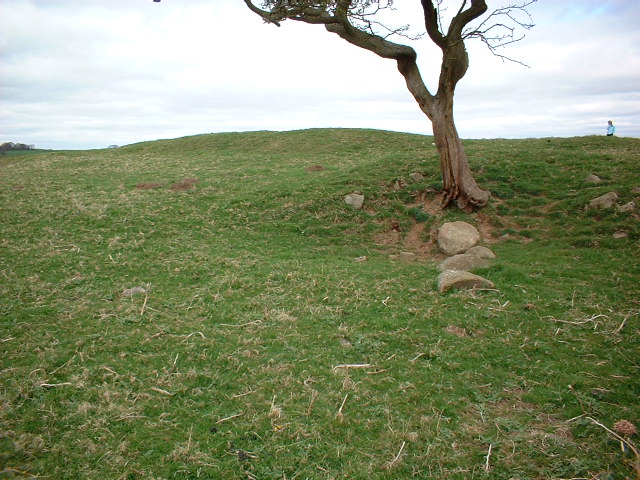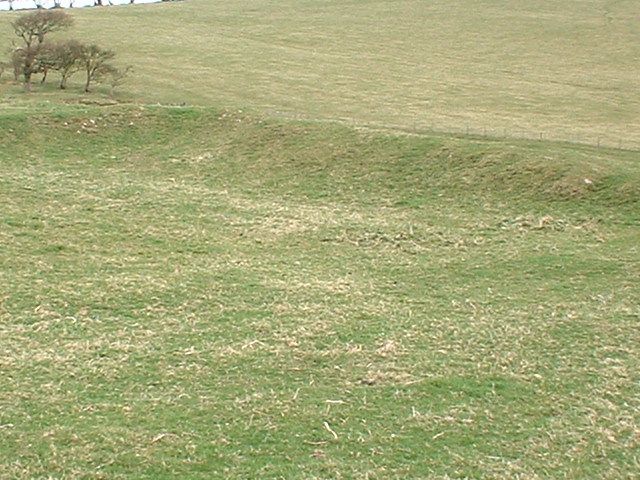My second visit was much more successful. There are 4 remaining stones in the circle plus the large cairn. The stones are located as follows:
(i) immediately north of the cairn
(ii) south west of the cairn
(iii) and (iv) on the opposite (ie western) edge of the field to the cairn, immediately in front of the stone wall – I shall refer to iv as the more northerly of this pair
Two further large stones are confusing outliers – one of these is south of the cairn (about 50 metres ESE of stone ii), and the other is just the other side of the wall to stones iii and iv, though a gate.
What makes it clear that this monument was a true stone circle is the presence of numerous socket holes which clearly housed further large stones. These are particularly clearly visible between stones i and iv. Just to the north west of these are traces of a shallow ditch which seems to have partially encircled the stone circle itself.
Running in a southerly direction from the centre of the stone circle, and just west of stone ii, extending about 100 metres south beyond the perimeter of the stone circle itself, appears to be a hollow way.
The sheer scale of this circle makes it harder than most to understand. It must be about 150 metres in diameter, and the slight rise in the middle of the circle means that not all the stones are visible from all viewpoints. Once you get the hang of it, this is arguably the finest remaining stone circle in Lancashire. The stones themselves are huge, and it’s a pity that no more of them remain. The location is fabulous.






















